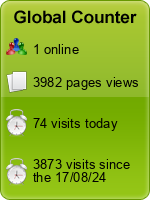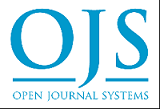Efektifitas media audio-visual dalam proses pendidikan kesehatan reproduksi pada wanita usia subur
DOI:
https://doi.org/10.33024/hjk.v18i1.268Keywords:
Kesehatan Reproduksi, Media Audio-Visual, Wanita Usia SuburAbstract
Background: Reproductive health is one of the global health challenges that needs to be considered in everyday life. Problems related to reproductive health are closely related to biological health problems in women of childbearing age. Audio visual media is one of the media that can be used to convey health information, where this media has the advantage of being able to stimulate various senses so it is hoped that it can increase understanding about women of childbearing age.
Purpose: To identify the effectiveness of audio-visual media in the reproductive health education process for women of childbearing age.
Method: Pre-experimental research with a one group pre-post-test design. The research was carried out in Jatimukti Village on a population of women of childbearing age who attended the advanced and empowered women's informal school, namely Lampu Juara, with a total sample of 50 people taken using total sampling techniques. The instrument used was a modified reproductive health instrument to assess knowledge, the validity test results were 0.294 and the reliability was 0.689. The results of the standard operational procedure test for measuring breast self-examination skills (BSE) used an intraclass correlation test with a test result of 0.816. Data analysis used the Wilcoxon statistical test.
Results: Obtained an increase in participants' knowledge of 21.76 and an average increase in skills scores of 25.48. The results of the Wilcoxon test with an asym.sig value of 0.000 (< 0.05) indicate that audio-visual media in the health education process is significantly effective on knowledge and skills.
Conclusion: Audio visual media in the health education process is significantly effective in increasing reproductive health knowledge and BSE practice skills, as evidenced by changes in the average score before and after implementing the intervention.
Keywords: Audio Visual Media; Reproductive Health; Women of Childbearing Age.
Pendahuluan: Kesehatan reproduksi merupakan salah satu tantangan kesehatan global yang perlu untuk diperhatikan dalam kehidupan sehari-hari. Isu terkait kesehatan reproduksi erat kaitannya dengan masalah kesehatan biologis pada wanita usia subur (WUS). Media audio-visual merupakan media yang dapat dimanfaatkan dalam menyampaikan informasi kesehatan, dimana media ini memiliki keuntungan yaitu bisa merangsang berbagai indera sehingga diharapkan dapat meningkatkan pemahaman WUS.
Tujuan: Untuk mengidentifikasi efektivitas media audio-visual dalam proses pendidikan kesehatan reproduksi pada wanita usia subur.
Metode: Penelitian pre-experiment dengan desain one group pre-post-test. Penelitian dilaksanakan di Desa Jatimukti terhadap populasi WUS, peserta dari sekolah informal perempuan maju dan berdaya yaitu Lampu Juara sebanyak 50 sampel yang diambil dengan menggunakan teknik total sampling. Instrumen yang digunakan modifikasi dari instrumen kesehatan reproduksi untuk menilai pengetahuan, hasil uji validitas 0.294 dan reliabilitas 0.689. Hasil uji SOP untuk mengukur keterampilan SADARI menggunakan uji intraclass correlation dengan hasil uji 0.816. Analisis data menerapkan uji statistik Wilcoxon.
Hasil: Didapatkan peningkatan pengetahuan partisipan sebesar 21.76 dan rata-rata peningkatan nilai keterampilan sebesar 25.48. Hasil uji Wilcoxon dengan nilai asym.sig 0.000 (< 0.05) yang menunjukan media audio-visual dalam proses pendidikan kesehatan efektif secara signifikan terhadap pengetahuan dan keterampilan.
Simpulan: Media audio-visual dalam proses pendidikan kesehatan efektif secara signifikan dalam meningkatkan pengetahuan kesehatan reproduksi dan keterampilan praktik SADARI, dibuktikan dengan terjadinya perubahan nilai rata-rata sebelum dan setelah pelaksanaan intervensi.
Kata Kunci: Kesehatan Reproduksi; Media Audio-visual; Wanita Usia Subur.









